20 Rare Photos That Reveal Everyday Life in 1944 Like Never Before

Imagine stepping into a time machine and landing smack-dab in 1944—a year where the world was in the midst of war, yet life carried on in fascinating, unexpected ways.
From the bustling streets of cities adapting to wartime rationing to the quiet, hopeful moments of families waiting for loved ones to return, these rare photos capture the heart and soul of a year unlike any other.
Through 20 stunning snapshots, we’ll take a deep dive into the daily lives of people navigating a world in flux. Some moments will make you smile, others might tug at your heartstrings, but every single image tells a story worth remembering.
Join us as we uncover history one frame at a time—because even in times of great uncertainty, life always finds a way to shine through.
1. Ration Card Queue
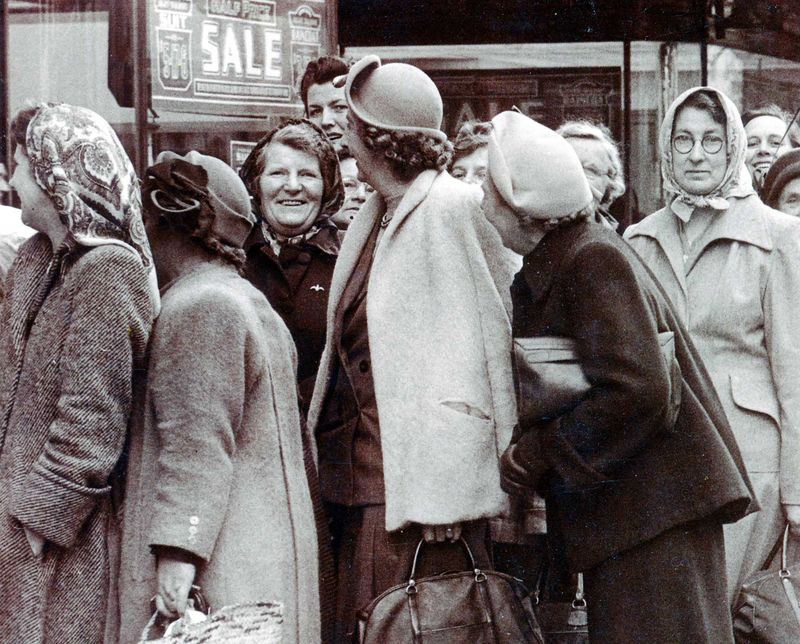
In the era of ration cards, grocery shopping was a strategic mission. The line was the social media of its day—where you caught up on the latest gossip and maybe snagged a recipe or two. Picture this: a group of people, each clutching their precious ration cards like golden tickets. The atmosphere is a blend of anticipation and camaraderie.
Conversations buzzed like bees, as neighbors shared stories and tips on getting that elusive extra ounce of butter. It was not just about food; it was about community, a chance to connect in a world where scarcity was the norm.
The grocery store was more than a shopping destination. It was a hub of hopes and dreams. Amid the rationing, each trip was a small victory, a reminder of resilience and the human spirit’s adaptability.
2. Victory Garden
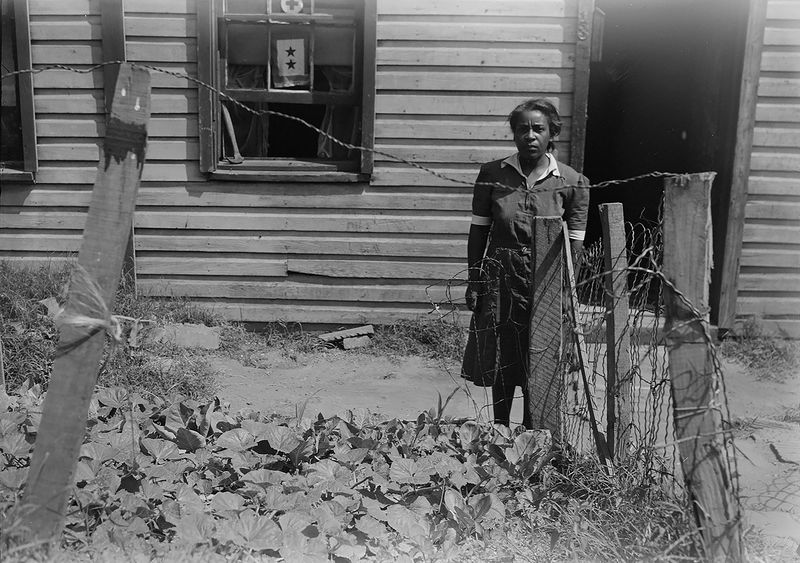
Victory Gardens sprouted up in backyards across the nation, turning ordinary citizens into green-thumbed patriots. Imagine a man, shovel in hand, tending to his plot with the focus of a soldier on the front lines. These gardens were not just about growing vegetables; they were about sowing hope.
The pride in growing one’s food was palpable, each plant a testament to resilience. Conversations with neighbors often revolved around tips for avoiding pests or maximizing yield. The garden was both a food source and a social nexus, where the spirit of cooperation thrived.
As tomatoes ripened and carrots sprouted, gardeners felt the quiet triumph of contributing to the war effort. These plots were more than soil and seed; they were symbols of perseverance and community strength, where each harvest brought a sense of accomplishment.
3. Blackout Drills
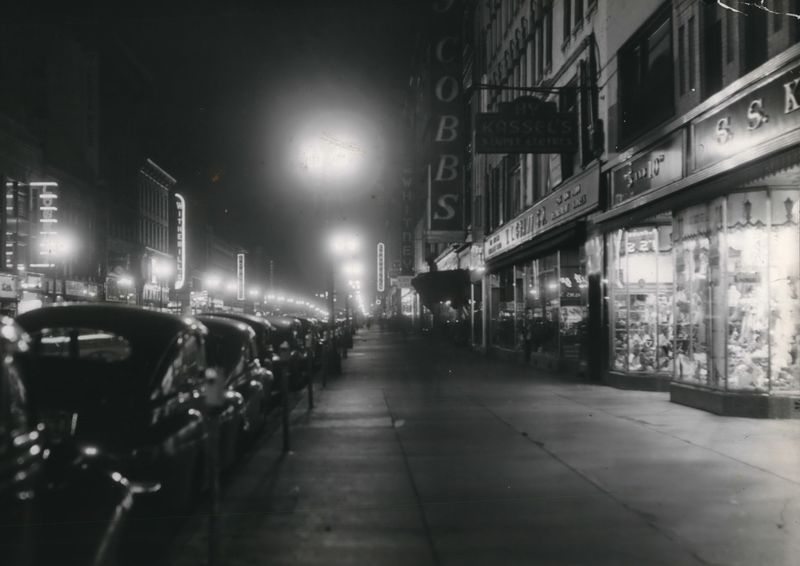
Ah, the blackout drill—a time when the living room transformed into a theater of shadows. Families gathered, curtains tightly drawn, creating an ambiance more dramatic than any Hitchcock film. The goal: practice for an air raid, but with a side of family bonding.
The flickering candlelight cast playful shadows, sparking imagination and maybe a few impromptu shadow puppet shows. Whispered conversations added to the mystery, each voice barely above a hush.
Despite the underlying seriousness, these drills were moments of unity. Families learned to navigate the darkness together, finding light in each other’s company. The drills were a blend of practicality and playfulness, their echoes heard in laughter and whispered reassurances.
4. War Bond Rally
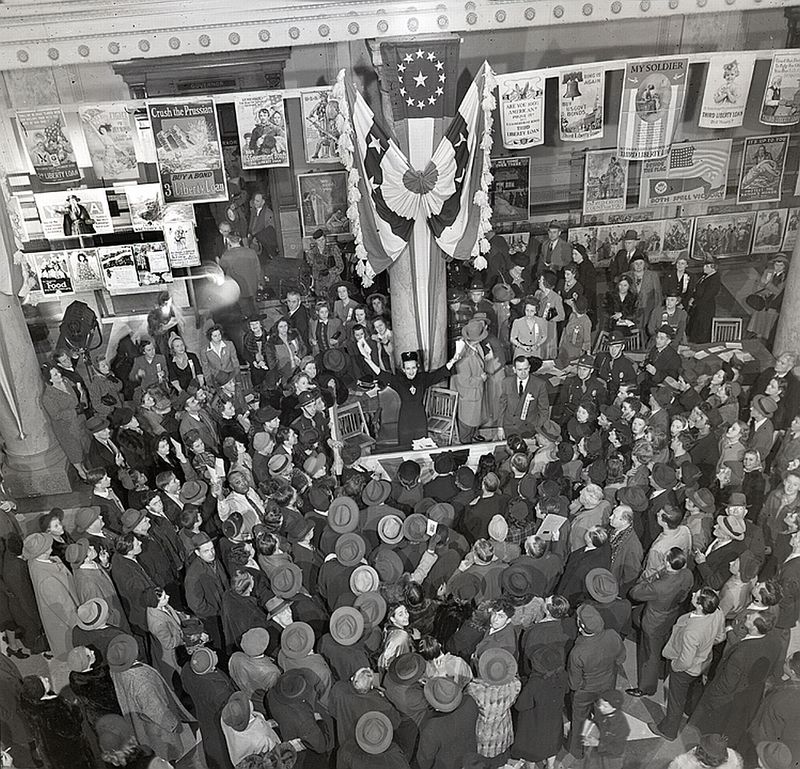
War bond rallies were the rock concerts of 1944, complete with cheering crowds and toe-tapping tunes. Picture a bustling town square, alive with the energy of a community coming together for a cause.
The air buzzed with excitement as speakers took the stage, rallying the crowd with patriotic fervor. Bands played lively music, turning the event into a festive gathering where dancing was encouraged.
Purchasing a bond was more than a financial decision—it was an act of patriotism. Each bond sold was a step toward victory, a symbol of shared sacrifice and commitment. These rallies were a testament to unity, where community spirit shone bright, rallying hope and determination like never before.
5. Factory Line Women
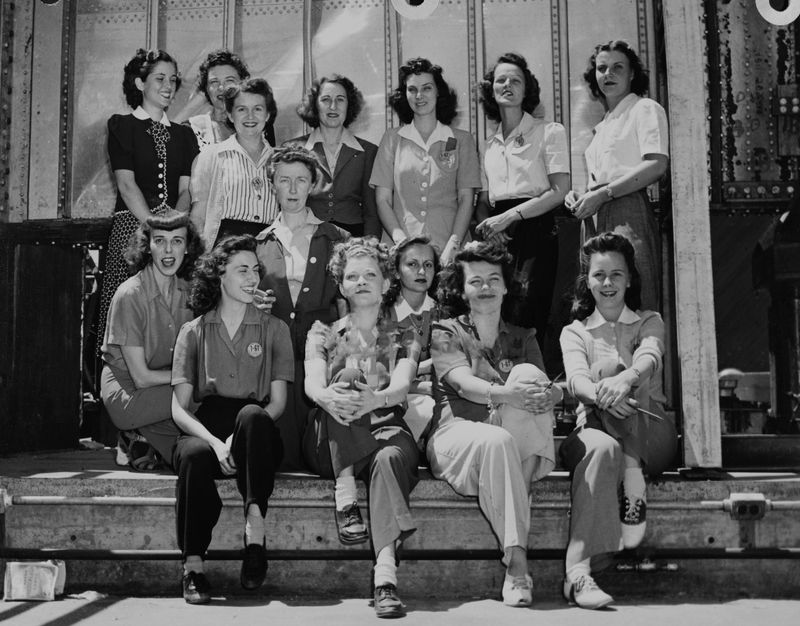
Call it the era of Rosie the Riveter, where women donned overalls and stepped onto the factory lines. These ladies were the backbone of the war effort, assembling machinery with precision and flair.
The factory was a symphony of sounds—tools clanging, machines humming, and camaraderie thriving. Each shift was a dance of coordination, where teamwork was the rhythm that kept everything moving smoothly.
These women were pioneers, reshaping societal norms with each bolt tightened. They were the unsung heroes, their contributions vital yet often overlooked. In the whirl of the factory, they found empowerment and purpose, paving the way for future generations of working women.
6. USO Show
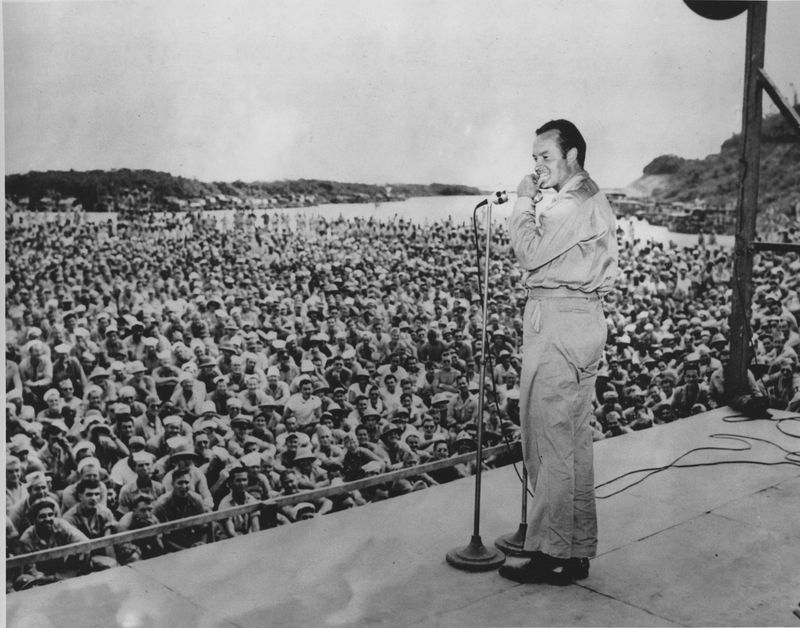
USO shows brought the glitz and glamor of Hollywood to wherever troops were stationed. Imagine a hall filled with soldiers, their faces alight with anticipation as the curtain rose on a night of entertainment.
The performers, a mix of musicians, comedians, and dancers, brought a slice of home to the front lines. Laughter echoed through the hall, a balm for weary spirits and a reminder of what awaited them back home.
These shows were more than just entertainment. They were vital morale boosters, strengthening the bonds between those in uniform and the performers who volunteered to bring joy. Each act was a reminder of resilience, offering a touch of normalcy amidst the chaos of war.
7. Air Raid Wardens
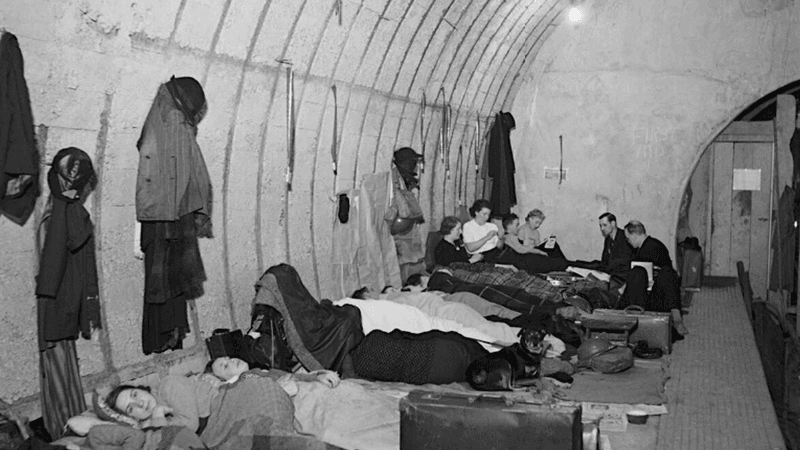
Enter the air raid wardens, the unsung guardians of the night. Clad in helmets and armed with flashlights, they roamed the streets, ensuring the blackout rules were followed to the letter.
Their presence was reassuring, a reminder of safety amidst uncertainty. Conversations with neighbors provided both guidance and reassurance, reinforcing the community’s resilience.
Patrolling the darkened streets, wardens were the sentinels of safety, their dedication unwavering. They were a symbol of community spirit, ensuring that each household adhered to the safety protocols, fostering a sense of solidarity and mutual care in challenging times.
8. 1944 School Day

School days in 1944 came with lessons not found in textbooks. Picture a classroom brimming with eager faces, students learning under the watchful eye of a teacher wielding chalk with authority.
The curriculum included subjects like math, history, and the fine art of duck-and-cover drills. Posters adorned the walls, reminders of a world at war and the importance of vigilance.
The classroom was a microcosm of resilience, where education continued undeterred. Despite the global turmoil, learning persevered, shaping future generations with knowledge and hope. Each school day was a reminder of the power of education to enlighten and empower, even amidst the darkest times.
9. 1940s Dance Hall
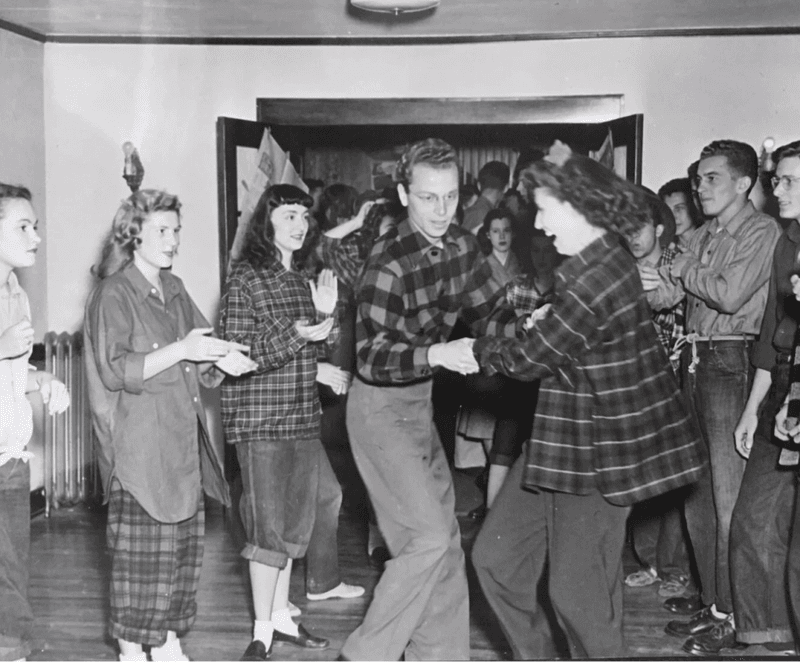
Dance halls in 1944 were the ultimate escape, where jitterbugs and swing ruled the floor. Picture a hall alive with energy, couples twirling under a canopy of colorful streamers.
The band played swing tunes that set feet tapping and hearts racing. Laughter mingled with the music, creating a heady cocktail of joy and jubilation.
Amidst the uncertainties of war, dance halls offered a refuge, a place to celebrate life and love. Each dance was a reminder of resilience, as partners moved in sync, finding harmony even when the world felt off-kilter. The dance floor was a sanctuary, where spirits soared and worries took a backseat.
10. 1944 Movie Theater
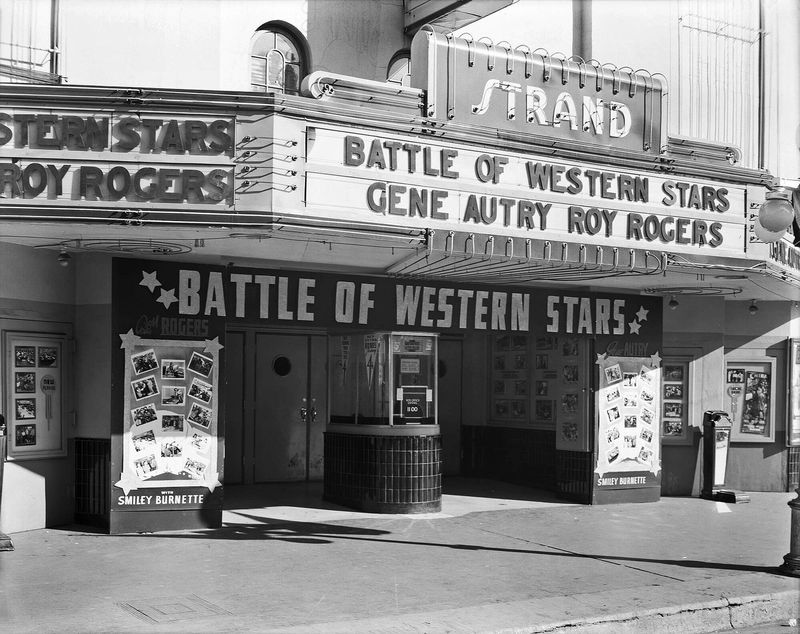
The movie theater was a portal to another world, offering a brief respite from reality. Imagine a marquee ablaze with lights, announcing the latest Hollywood sensation.
Crowds lined up, eager for an escape into the silver screen’s embrace. The theater was a sanctuary, where stories unfolded in technicolor, transporting audiences far from the turmoil outside.
As the projector whirred to life, a collective sigh of contentment filled the air. The magic of cinema provided a much-needed diversion, a chance to dream amidst the chaos. Each film was a reminder of storytelling’s power to uplift and inspire, offering hope when it was needed most.
11. Railway Station Farewells
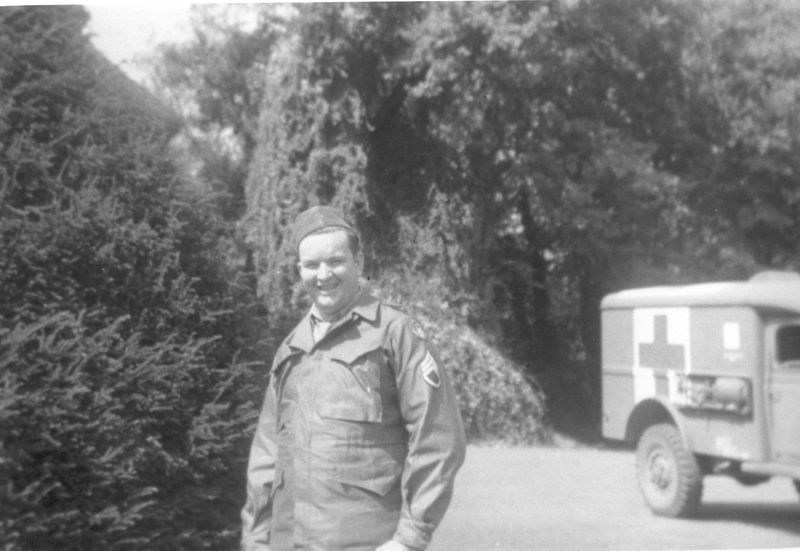
Railway stations in 1944 were the backdrop for countless farewells, each one a poignant snapshot of emotion. Picture a bustling platform, where soldiers and families exchanged hugs and handshakes.
Each goodbye was laden with promises and hopes, a testament to the bonds that transcended distance. The platform was a stage for heartfelt embraces and tearful waves, each departure a blend of sadness and resolve.
Despite the heartache, these farewells were acts of love and courage. They underscored the human capacity for resilience, where each promise to reunite kindled a flicker of hope. The station was a place where emotions ran deep, a reminder of the strength found in connection.
12. 1944 Street Market

Street markets in 1944 were lively hubs of commerce and community. Imagine a bustling market, stalls brimming with fresh produce and handmade goods, each vendor calling out their wares.
Shoppers haggled with flair, their exchanges a blend of banter and business. The market was a tapestry of sounds and scents, where the aroma of fresh bread mingled with the chatter of friends catching up.
Despite the challenges, the market was a testament to perseverance, its vibrant energy a reflection of community strength. Each transaction was more than a purchase; it was an affirmation of life’s continuity, a celebration of the human spirit’s ability to adapt and thrive.
13. Victory Mail
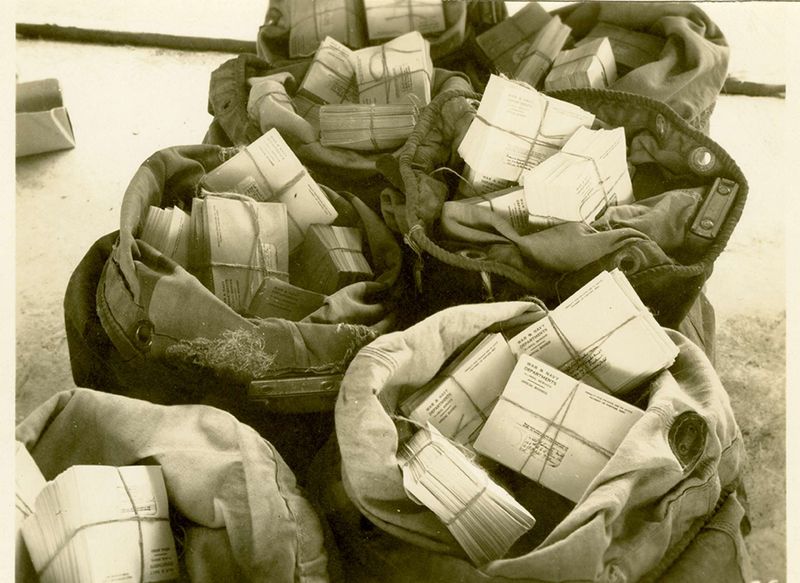
Victory mail, or V-Mail, was the 1944 version of instant messaging, albeit with a slight delay. Picture a soldier, pen in hand, pouring thoughts onto paper, each word a lifeline to loved ones.
The process was ingenious—letters were microfilmed to save space, then enlarged upon arrival. Each piece of V-Mail was a tangible connection, a token of love and longing.
Despite the distance, these letters bridged the gap, carrying news and affection across miles. For those at home, receiving V-Mail was a moment of joy, a reminder of bonds unbroken by war. It was a testament to communication’s power, keeping hearts intertwined across continents.
14. 1944 Kitchen Innovations
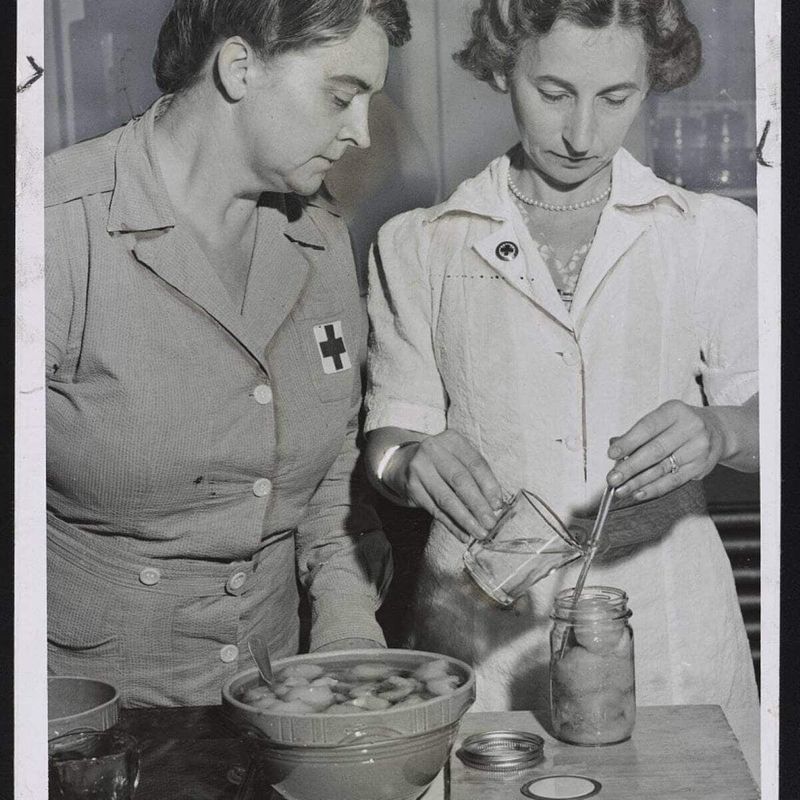
The 1944 kitchen was a hub of innovation, where ingenuity transformed mundane meals into culinary victories. Imagine a woman in her kitchen, navigating rationing with a touch of creativity.
Canning became an art form, preserving summer’s bounty for the leaner months. Recipes adapted to wartime shortages, with substitutions that turned humble ingredients into gourmet delights.
The kitchen was a battlefield of its own, where every meal was a strategy session. Despite the challenges, home cooks crafted dishes that nourished both body and spirit. Each meal was a triumph, a testament to resourcefulness and resilience in the face of adversity.
15. 1944 Fashion Trends
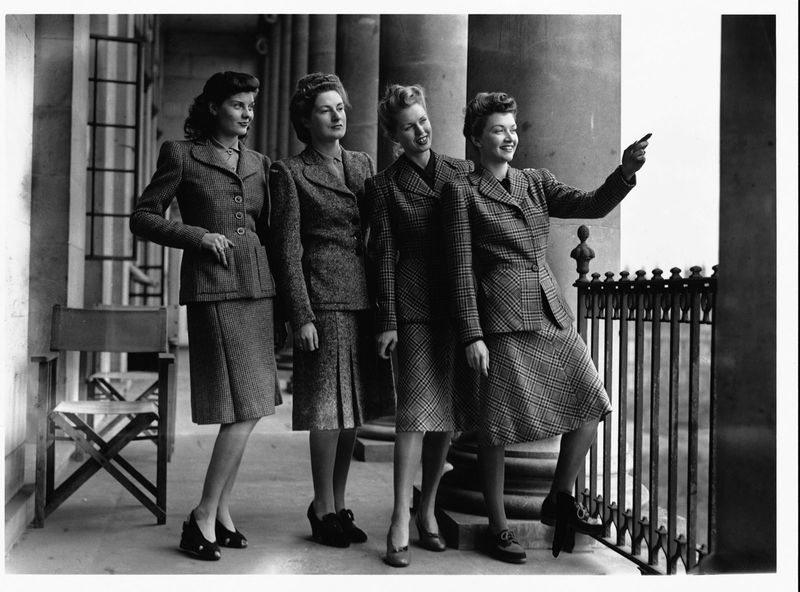
Fashion in 1944 was all about making do with style. Picture a clothing store filled with women trying on dresses that cleverly combined practicality with panache.
Wartime restrictions spurred creativity, with designs that embraced utility and elegance. Military-inspired fashion was all the rage, with structured silhouettes and bold lines.
Despite the constraints, fashionistas found ways to express individuality. Accessories became major players, adding flair to even the simplest outfits. Each ensemble was a statement of defiance, a reminder that even in challenging times, style could shine and uplift the spirit.
16. 1944 Radio Broadcast
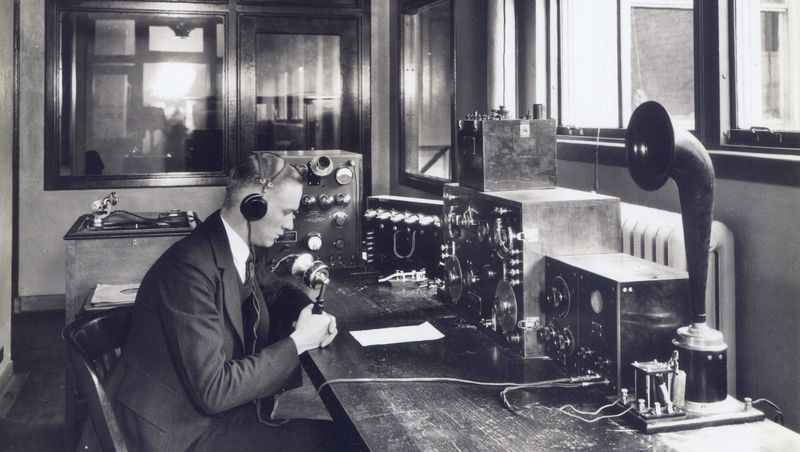
Radio was the heartbeat of the home in 1944, a source of news, entertainment, and connection. Picture a family gathered around their radio, hanging onto every word that crackled through the speakers.
Programs ranged from thrilling dramas to lively music shows, each broadcast a slice of the outside world. News updates kept listeners informed, while the soothing voices of announcers offered comfort.
Despite the distance, radio brought people together, its invisible waves weaving a tapestry of connection. Each broadcast was a reminder of the power of sound to unite and inspire, a beacon of hope in uncertain times.
17. 1944 Beach Outing
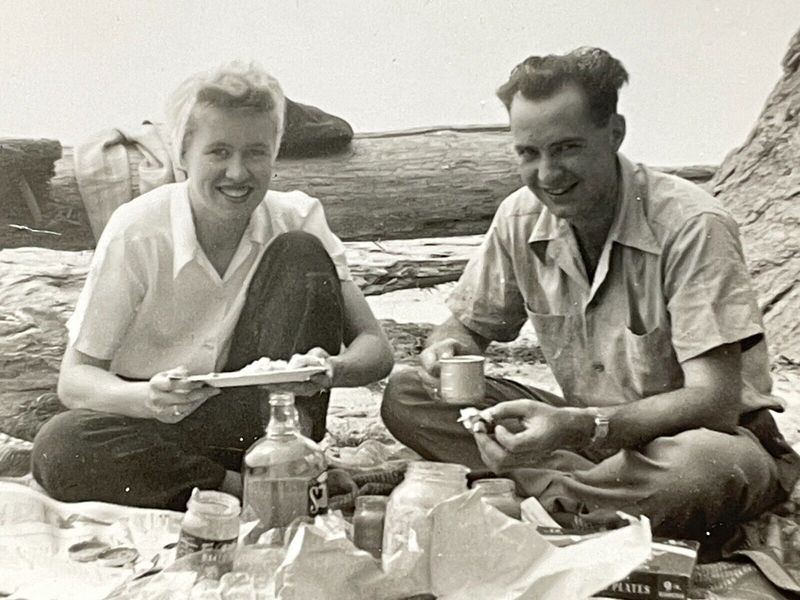
Beach outings in 1944 were moments of sunshine amidst the storm. Picture a family frolicking in the surf, their laughter mingling with the sound of crashing waves.
Vintage swimsuits and striped umbrellas added to the charm, each element a nod to simpler times. The beach was a canvas of carefree joy, where worries were left behind.
Despite the world at war, the beach offered solace and rejuvenation. Each visit was a reminder of life’s simple pleasures, a testament to the human spirit’s ability to find joy and connection, even in challenging times.
18. 1944 Library Visit
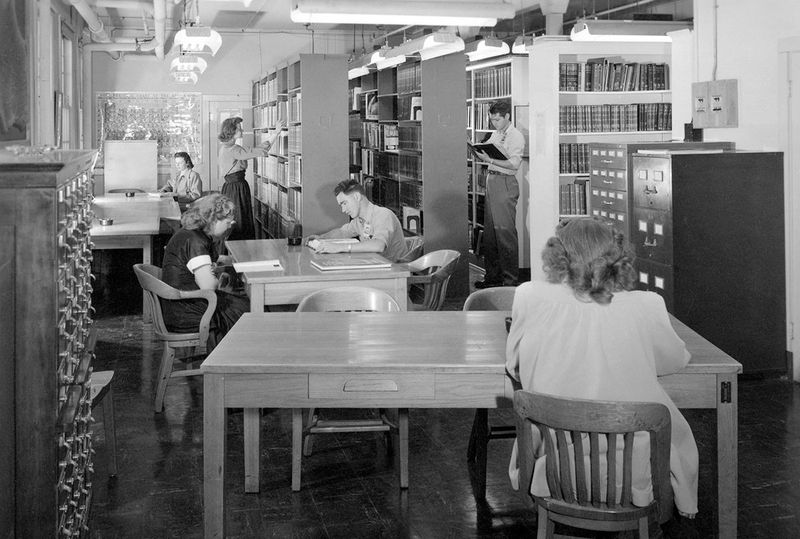
Libraries in 1944 were sanctuaries of knowledge and escape. Picture patrons wandering aisles filled with books, each tome a doorway to new worlds.
The librarian, a guardian of wisdom, guided readers to treasures that informed and inspired. Conversations in hushed tones added to the library’s charm, a symphony of curiosity.
Despite the challenges outside, the library was a bastion of learning and hope. Each visit was a journey, a reminder of the power of words to educate and uplift. It was a place where imagination soared, offering solace and enlightenment in equal measure.
19. Community Soup Kitchen
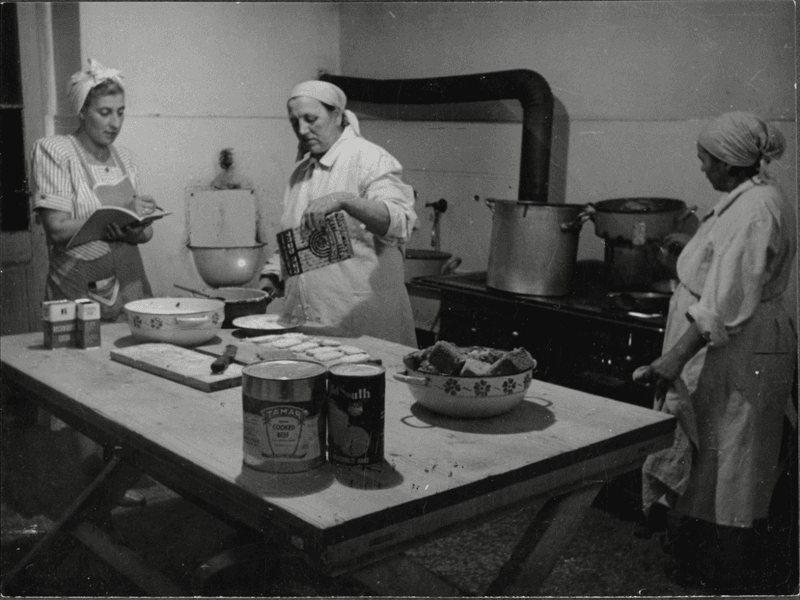
Community soup kitchens in 1944 were beacons of hope and compassion. Picture a bustling kitchen, volunteers ladling out hot meals with smiles and warm words.
The soup kitchen was more than sustenance; it was a symbol of community care. As people gathered for a meal, they found comfort not just in food, but in the company of others facing similar struggles.
Despite the scarcity, generosity flourished. Each meal served was a reminder of human kindness and resilience, where the simple act of sharing nourished both body and soul. It was a testament to the spirit of giving, a beacon of light in challenging times.
20. The 1944 Ice Cream Bicycle Vendor
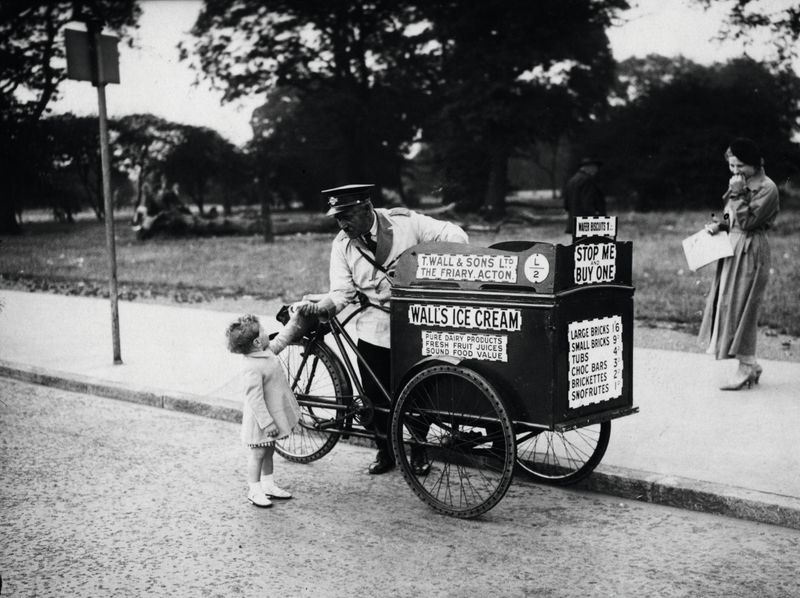
The year 1944 was not just about wartime struggles; it was also about small joys and everyday resilience. Among these was the sight of a cheerful ice cream vendor pedaling his bicycle-cart down busy city streets.
Children, eagerly lining up with their coins, found a sweet escape from the tensions of the era. Adults, too, appreciated this simple pleasure.
The vendor, often a well-known figure in the neighborhood, symbolized a community’s spirit of perseverance. As the air filled with laughter and the sound of the cart’s bell, a brief moment of normalcy was savored by all.
